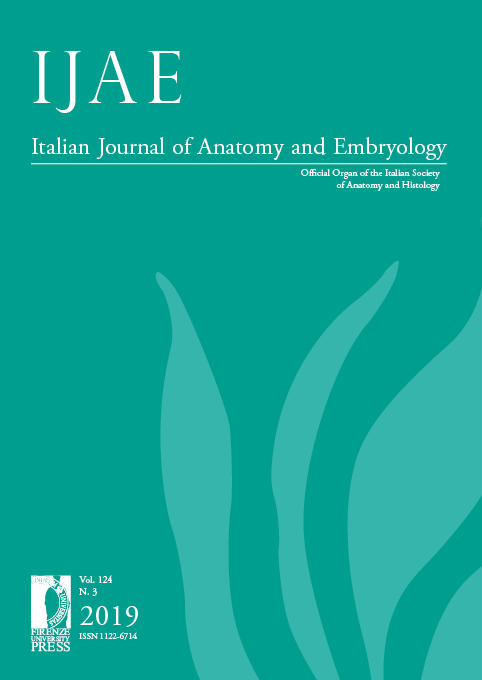Morphometric Analysis of Body and Odontoid Process of Axis Vertebrae in North Indians: An Anatomical Perspective
Published 2020-05-20
Keywords
- Axis,
- Atlanto-odontoidal facet,
- Body of axis,
- Morphometry,
- Odontoid Process
- Vertebral artery ...More
How to Cite
Abstract
Axis, the second cervical vertebra forms a pivot on which the atlas rotates carrying the head. Though this region is very small but can cause serious complications due to complex anatomy of the cranio-cervical junction. Odontoid fractures compose 7-20% of all cervical spine fractures. The vertebral artery may also be at risk as it is present on under surface of axis. Thus, thorough understanding of the anatomy of body of axis and its odontoid process(dens) is required in screw placement or other surgical interventions. Therefore, aim of the present study was to measure and present the detailed morphometric parameters of body of axis and its odontoid process. 60 dry axis vertebrae were obtained for anatomic evaluation focused on body and odontoid process. The morphometric measurements included linear measurements focused on length, breadth and height of body and odontoid process. Vertebral body length, superior width, inferior width, anterior height and posterior height were found to be 15.10+1.56mm, 15.48+2.09mm,15.83+2.12 mm, 19.28+2.24 and 16.26+1.73mm. Odontoid process height, diameter, maximum and minimum width were found to be 16.36+1.68 mm, 10.74+1.06 mm, 9.85+1.08 mm and 8.79+1.17 mm respectively. Morphological features of dens included its macroscopic appearance and shape of ventral and dorsal facets. Most common shapes of ventral and dorsal facets were found to be vertical elliptical 83.3 % and horizontal elliptical 76.66% respectively. The knowledge of these parameters is important for the surgeons while operating around axis in spinal surgical procedures like anterior atlanto-axial fixation, anterior odontoid screw fixation or odontoidectomy procedures.


